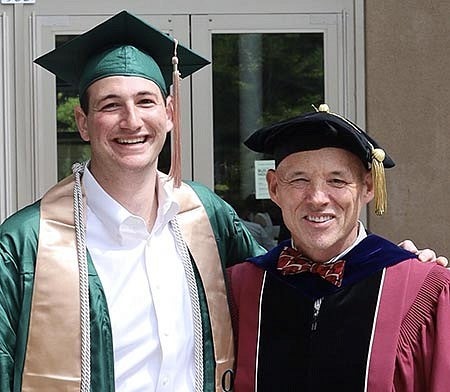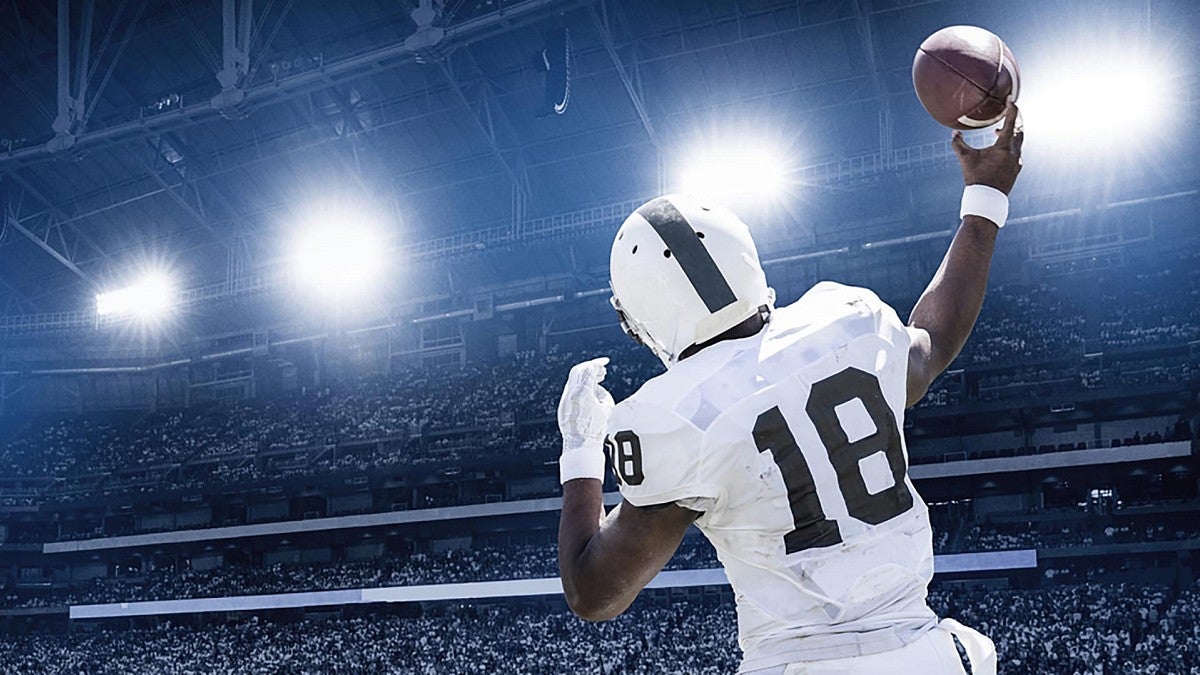New research by a University of Oregon student and professor finds that the NCAA football transfer portal can help some teams but not others, depending on the position a transferring student plays.
Adam Kovar, a 2023 graduate from the Lundquist College of Business, and data analytics instructor Charlie Bame-Aldred started the project last year and have submitted their analysis and research study to the Journal of Sports Analytics for review. But their findings are already raising some eyebrows.
Titled “Performance Differences Between College Football Transfers and Recruits,” the paper looks into how strategic use of the NCAA transfer portal boosts performance in key football positions, including quarterback.
To get there, Kovar and Bame-Aldred systematically evaluated each position’s production using offensive and defensive grades created by Pro Football Focus, a ranking and stats aggregator. For each position, they determined the average grades for recruits and transfers from the Power 5 conferences: the ACC, Big Ten, Big 12, SEC and Pac-12.
“We then executed tests of statistical significance to determine if there were true differences in production between recruits and transfers at each position at the Power 5 level, since it is the highest level of competition within the sport,” Kovar said.

What the analysis ultimately found is that the benefits the transfer portal affords a team depend on position.
“We found that transfer quarterbacks and interior offensive linemen significantly outperformed recruits, and transfer linebackers significantly underperformed recruits,” Kovar said.
Kovar got the idea to study the effect of the transfer portal on football team performance last spring while taking a class at the Lundquist College of Business.
“I started to look into it, and then I was in Charlie Bame-Aldred’s data analytics class last spring and I said, ‘Hey, here is my idea. I don't really know where to go from here,’ Kovar said. “I needed some guidance with data collection and the research process, and he agreed to look into it with me.”
That partnership started during the course and continued even after Kovar graduated in June 2023.
“By October we started to figure out the methodology, have a streamlined route for how to get there and then we updated it and kept going,” Kovar said. “Once we had the latest data and hit December, we thought, ‘Hey, this is something interesting.’ And from there we decided to turn it into a paper.”
In addition to the positional breakdown, Kovar and Bame-Aldred also looked at the effect of the transfer portal on roster construction as a whole.
“We found that the average transfer quarterback versus the average recruited quarterback resulted in approximately one additional win per season for their team,” Kovar said.
The researchers also discovered a relationship between elevated use of the portal and team wins: The teams with the lowest percentages of snaps played by transfers averaged more than 1.4 wins more than the teams with the highest percentages of snaps played by transfers.
“Our results suggest that coaches and recruiters should diligently use the portal for strategic acquisitions rather than as a replacement for traditional recruiting through high school and junior college,” Kovar said. “For student-athletes, being judicious in their selection of a school will offer the best opportunity for their success within college football.”
The NCAA transfer portal allows student-athletes to sign up to transfer to another member institution by formally entering into the portal database. The database includes stats, positions and other information that allows member schools to scout players who may be a good fit for their team. Kovar and Bame-Aldred were able to complete their analysis using data available from Pro Football Focus.
The spring football transfer portal closes April 30. This Saturday, April 27, is the UO's spring game.
Beyond team wins and losses, star athletes must now also consider their name and likeness potential and whether or not the next institution will be effective at marketing them.
The collaboration between Kovar and Bame-Aldred also showcases the types of opportunities and collaborations that happen between and among students and faculty at the University of Oregon, with those connections extending well beyond graduation. In fact, the researchers have also applied similar methodologies to NCAA volleyball and basketball players.
So, is this NCAA version of Moneyball on the money with its predictions?
“Let’s just say I won my March Madness pool,” Kovar said.
By AnneMarie Knepper-Sjoblom and Jim Engelhardt, Lundquist College of Business


